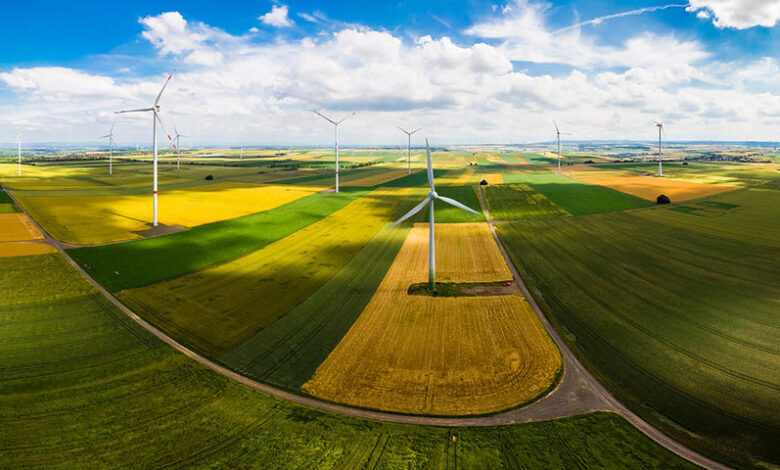
Regenerative Agriculture is a holistic approach to farming that focuses on restoring and enhancing the health of the soil, the ecosystem, and the community as a whole. It goes beyond sustainable agriculture by actively improving the land and leaving it better than before. In this blog post, we will explore the principles of Regenerative Agriculture, its benefits to the environment, its impact on carbon sequestration, and how it benefits farmers and communities. We will also discuss some of the challenges and criticisms of this approach, as well as highlight some successful case studies.
Understanding Regenerative Agriculture
At its essence, Regenerative Agriculture represents a paradigm shift in the way we approach farming and land management. It is an umbrella term for farming practices that prioritize the regeneration of the soil, ecosystems, and communities. Central to this approach is the enhancement of soil fertility, aiming to invigorate the land it uses rather than deplete it. This agricultural methodology is distinguished by its commitment to practices that rebuild organic soil matter and restore degraded soil biodiversity – resulting in both carbon drawdown and improving the water cycle.
- Key to Regenerative Agriculture is its focus on leveraging the power of photosynthesis in plants to close the carbon loop, turning atmospheric carbon dioxide into beneficial soil organic matter. This is achieved through a variety of practices that work in harmony with nature, such as cover cropping, no-till farming, and holistic livestock management. These methods not only foster the health of the land but also support thriving ecosystems above and below the soil surface.
- By emphasizing the interconnectedness of all components of the farm system – including the farmers and the community – Regenerative Agriculture seeks to create more resilient, productive, and sustainable food systems. It diverges from traditional farming by working with nature’s rhythms and cycles, thus enhancing the resilience and vitality of the land. This approach not only helps in the fight against climate rising but also empowers farmers with a deeper understanding and respect for the land they steward, leading to more conscientious farming practices that can sustain us well into the future.
The Core Principles of Regenerative Agriculture
The foundation of Regenerative Agriculture lies in its core principles, designed to rejuvenate the earth and enrich our agricultural practices. These guiding tenets aim to transform and sustain farming by focusing on critical aspects that contribute to a regenerative system. The first principle involves minimizing soil disturbance. This approach encourages less mechanical interference with the soil, such as reduced or no-tillage practices, to maintain its structure and integrity, allowing microorganisms and worms to thrive.
- Next, maximizing crop diversity is pivotal. A diverse crop rotation system introduces a variety of plants that support different nutrients and benefits to the soil, promoting a balanced ecosystem. This diversity extends above and below the ground, enhancing the soil’s health and the resilience of the crop system against pests and diseases.
- Another key principle is keeping living roots in the ground year-round. Through the use of cover crops, farmers can ensure that the soil is always covered, which helps in preventing soil erosion, retaining moisture, and providing habitat for beneficial organisms. These living roots continuously feed the soil, maintaining its vitality even when cash crops are not in season.
- Integrating livestock into crop production systems is also a core principle. This practice involves using animals to graze on cover crops and residues, naturally fertilizing the soil with their manure and aiding in the breakdown of organic matter, which enriches the soil nutrient content.
- Finally, incorporating crop rotations and poly-cultures is essential. This not only prevents disease and pest cycles from becoming established but also contributes to the health of the soil and the environment. These principles, when applied in unison, create a synergistic effect that bolsters the ecosystem, making farms more productive and sustainable.
Benefits of Regenerative Agriculture to the Environment
The transformative power of Regenerative Agriculture extends deeply into environmental healing and revitalization. A primary benefit is its remarkable ability to enhance soil health, which becomes a foundation for a myriad of ecological advantages. Healthier soils lead to improved water retention capabilities, acting as natural sponges that absorb and hold water more effectively. This not only combats drought but also reduces the need for irrigation, thus conserving water resources.
- Biodiversity is another critical area where Regenerative Agriculture makes a significant impact. By employing practices such as diverse crop rotations and integrating livestock, these farming methods encourage the presence of a wide range of species, from beneficial insects to microorganisms and birds. This diversity strengthens the ecosystem, making it more resilient to pests and diseases without the need for chemical interventions.
- Furthermore, by reducing reliance on synthetic fertilizers and pesticides, Regenerative Agriculture minimizes pollution, thereby protecting nearby waterways and contributing to cleaner air and water. The reduction of chemical inputs also supports a healthier environment for farmworkers and surrounding communities, contributing to overall well-being.
- Additionally, the practice plays a crucial role in combating climate change by enhancing carbon capture. Through improved soil health and vegetation cover, soils are better equipped to pull carbon from the atmosphere and store it underground, offering a natural solution to greenhouse gas accumulation.
- By focusing on these sustainable and holistic practices, Regenerative Agriculture fosters an environment where both the land and its inhabitants can thrive, underpinning the ecological balance essential for our planet’s future.
Regenerative Agriculture and Carbon Sequestration
One of the most profound impacts of Regenerative Agriculture lies in its capacity for carbon sequestration, a critical element in the global fight against climate change. Through practices that enhance soil health and increase organic matter, such as cover cropping, no-till farming, and the integration of livestock, this agricultural approach transforms the soil into a powerful carbon sink. The mechanics behind this are rooted in the process of photosynthesis, where plants capture carbon dioxide from the atmosphere, converting it into organic matter that is then deposited in the soil. This process not only pulls significant amounts of carbon out of the atmosphere but also stores it in the ground for extended periods, mitigating the greenhouse effect that contributes to global warming.
- Research underscores the efficacy of Regenerative Agriculture in boosting soil’s carbon storage capabilities. Data indicate that adopting regenerative practices can lead to an increase in the soil’s carbon sequestration rates, which outstrip those of conventional farming methods. This carbon capture not only addresses the pressing issue of climate change but also revitalizes the soil, enhancing its structure, fertility, and the overall health of the ecosystem it supports.
- The role of Regenerative Agriculture in carbon sequestration exemplifies how agriculture can evolve from being a significant carbon emitter to a crucial part of the climate solution. By harnessing the natural synergies between soil, plants, and atmospheric carbon, Regenerative Agriculture paves the way for a sustainable and environmentally resilient agricultural paradigm.
How Regenerative Agriculture Benefits Farmers and Communities
The transition to Regenerative Agriculture offers a multitude of advantages for those who work the land and the communities that surround them. One of the most tangible benefits is the reduction in input costs for farmers. By leveraging natural processes and cycles, such as nitrogen-fixing cover crops instead of synthetic fertilizers, farmers can significantly lower their expenses. This shift not only aids in improving soil health but also leads to more resilient crops capable of withstanding extreme weather conditions, pests, and diseases. As a result, crop yields can increase over time, enhancing food security and providing a more stable income for farmers.
- For communities, the adoption of Regenerative Agriculture practices fosters local food systems that are more robust and independent. This local focus helps to keep food dollars within the community, boosting the local economy and creating jobs. Furthermore, these practices contribute to the restoration of local ecosystems, leading to cleaner air and water, which directly impacts community health and well-being.
- Engagement and education are additional benefits, as Regenerative Agriculture often involves a collaborative approach among farmers, researchers, and community members. This collaborative effort not only aids in the sharing of knowledge and resources but also strengthens community bonds, creating a more connected and supportive social fabric.
- By prioritizing the health of the soil and the ecosystem, Regenerative Agriculture lays the groundwork for a more sustainable and equitable future for farming communities, demonstrating that the well-being of our agriculture and communities are deeply intertwined.
Challenges and Criticisms of Regenerative Agriculture
Adopting Regenerative Agriculture is not without its hurdles and detractors. One point of contention is the scalability and applicability across diverse farming systems. Critics argue that while beneficial, these practices may not be universally feasible, particularly in areas with distinct climatic or soil conditions that might not support or benefit from regenerative techniques as readily. There’s also the economic aspect; transitioning to regenerative practices requires an upfront investment in time, knowledge, and resources. Small-scale farmers, in particular, might find these initial costs prohibitive without external support or incentives.
- Furthermore, the reliance on increased labor and a higher level of management skill is seen as a significant barrier. Regenerative Agriculture necessitates a deep understanding of ecological systems, soil health, and crop-livestock interactions that may surpass the expertise or capacity of some farmers, particularly those accustomed to more conventional methods.
- Criticism also extends to the claim of carbon sequestration potential, with some skeptics demanding more comprehensive, long-term studies to validate these effects across varying ecosystems. While evidence supports the carbon capture capabilities of regenerative practices, the extent and permanence of sequestration remain subjects for ongoing research.
- Lastly, the lack of a unified definition or standards for what constitutes Regenerative Agriculture practices leads to ambiguity and potential greenwashing, where claims of regenerative practices may not fully align with the principles and benefits espoused by its advocates.
Case Studies of Successful Regenerative Agriculture Practices
Across the globe, innovative farmers and agricultural communities are witnessing remarkable successes with Regenerative Agriculture. For instance, in the Midwest of the United States, a family-run farm has seen a significant increase in soil organic matter and water retention after transitioning to no-till farming and cover cropping. This shift not only reduced their need for irrigation but also resulted in higher yields and improved crop resilience against drought and pests.
- In Australia, a large-scale grazing operation implemented holistic management practices, focusing on rotational grazing that mimics natural herd movements. The results were astounding: enhanced soil health, increased biodiversity, and a return of native grasses that had not been seen for decades. This approach not only improved the productivity of the land but also increased carbon sequestration, contributing to climate change mitigation.
- Another example comes from Africa, where smallholder farms are integrating agroforestry, combining crop production with tree planting. This practice not only diversifies income sources for farmers but also improves soil fertility, reduces erosion, and increases food security for local communities.
- These case studies underscore the adaptability and potential of Regenerative Agriculture across different landscapes and scales. They highlight how, with the right practices and dedication, farming can transform into a regenerative force for the environment, proving beneficial for both the planet and its people.
Conclusion
Regenerative Agriculture embodies a forward-thinking approach to farming, emphasizing not only the sustainability of agricultural practices but also their ability to revitalize the earth. This methodology promises to usher in a future where agriculture and environmental stewardship go hand in hand, contributing positively to both the economy and the ecosystem. The holistic nature of Regenerative Agriculture, with its focus on enhancing soil health and biodiversity, positions it as a key player in addressing global challenges such as climate change, food security, and rural livelihoods.
Despite facing hurdles such as scalability and the need for initial investment, the overarching benefits present a compelling case for its wider adoption. Through continued support, research, and collaboration, the principles of Regenerative Agriculture can be further integrated into our farming systems, creating a more robust, sustainable, and equitable food future for all. As we embrace this transformative approach, we pave the way for a farming paradigm that nourishes the planet, empowers communities, and sustains generations to come.


